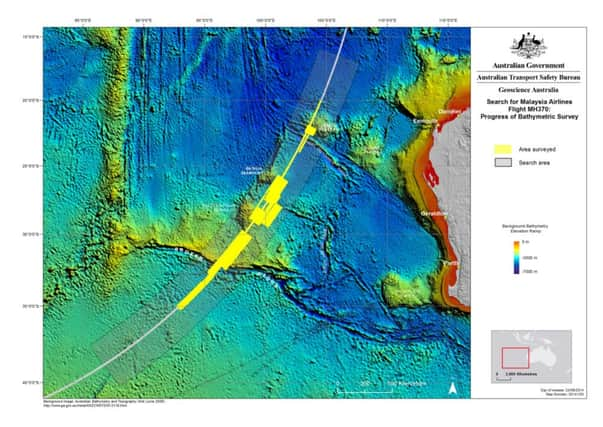Ships resume search for missing Flight MH370


The vessel GO Phoenix, which left Jakarta late last month, arrived in the search zone, about 1,800 miles west of Australia, and began sweeping the area yesterday with a sonar device known as a towfish.
Based on information released by Australian authorities, an independent group of analysts said they expected the search to start at the southernmost point of the designated high-priority area, which covers about 23,000sq miles.
Advertisement
Hide AdAdvertisement
Hide AdTim Farrar, a California-based satellite industry consultant, said: “It’s an acknowledgment that the further-south solution is more likely to answer the puzzle of where the plane went down.”
A focus on the southern end of the search area suggests investigators have concluded that the Boeing 777 went faster and flew further than projected by many earlier analyses. But the ocean is deeper, storms tend to be more violent and logistics are harder as search ships have to sail further from Australian ports.
Flight 370 disappeared en route from Kuala Lumpur to Beijing on 8 March with 239 passengers on board. Investigators believe it crashed when it ran out of fuel.
Military crews spent about 100 days searching the ocean’s surface for debris after the plane went missing but found nothing. An initial underwater search also failed to find any traces.
Martin Dolan, chief commissioner of the Australian Transport Safety Bureau, the agency leading the multinational hunt, said another ship docked in the Western Australian port of Fremantle on Sunday to be fitted with a towfish and other equipment. It should arrive in the search zone next week.
A third vessel, Fugro Equator, is completing a survey of the sea floor where the search has been concentrated. It will then join the hunt. In early August, Australia selected Dutch oil and gas consulting firm Fugro NV to lead a rebooted search for the Malaysian jetliner. The GO Phoenix was sent by Malaysia’s government to assist Fugro’s vessels.
The three search ships will tow the delicate equipment about 100m, or 330ft, above the seabed through areas now known to have deep crevasses, undersea mountains and volcanoes, Mr Dolan said.
The towfish are fitted with side-scan sonar and can carry video equipment to help crews aboard the ships spot any debris from Flight 370.
Advertisement
Hide AdAdvertisement
Hide AdThe Fugro Discovery will also have a device with a sensor that can detect traces of jet fuel, Mr Dolan said.
He said he was “cautiously optimistic” the next phase would eventually locate the plane.
Irene Burrows, whose son and daughter-in-law were on the flight, also said she believed the plane would eventually be found and that her family would be able to move on. “We’re in limbo,” she said. “It will be good to know where it is.”